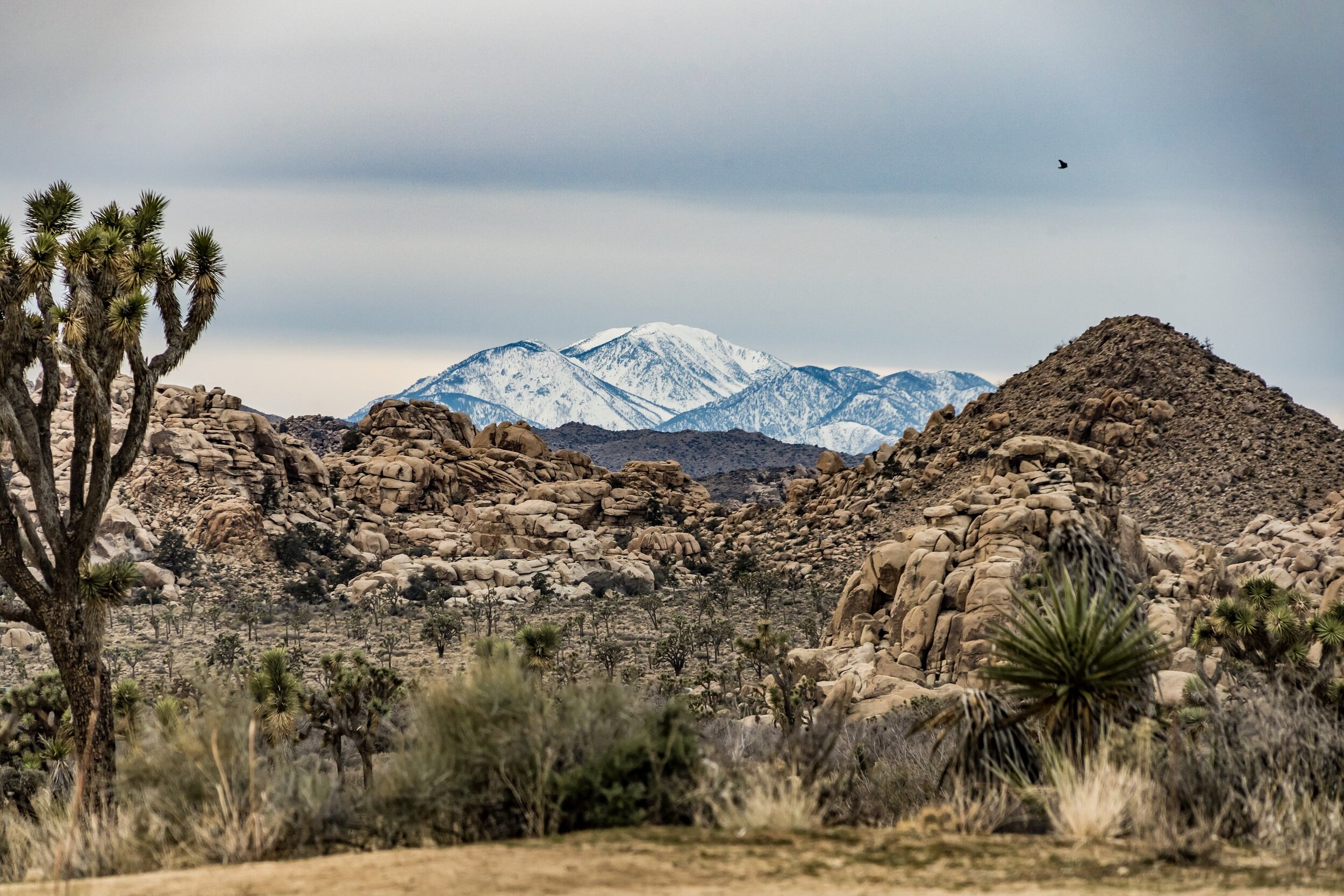What Makes Joshua Tree a Desert?
A visit to Joshua Tree National Park allows you the opportunity to visit two desert. The park lies in the southern section of the Mojave Desert and the northern portion of the Colorado Desert, but why is there a desert in southeastern California? To find the answer, look west.
Image by Carmelina Krein
There you’ll find some of the tallest mountains in Southern California: Mount San Jacinto (10,804ft.) and Mount San Gorgonio (11,502ft.). During the winter, moist air builds up over the Pacific Ocean and moves east. Eventually the moist air reach these mountains just west of Joshua Tree National Park. The tall mountains force the air to rise. As the air rises its temperature drops. Because air isn’t able to hold as much moisture when its cold, precipitation falls on the western sides of the mountains before traveling eastward towards Joshua Tree National Park. By the time the air reaches the park, most of its perspiration has been released. This is called the rain shadow effect; the topography controls the climate here.
Southern California’s deserts get another opportunity for precipitation during the late summer when tropical storms reach the desert from the Gulf of California to the south. Because these storms from the south don’t have a mountain range blocking their path, they are able to drop most of their moisture in the desert over a short period of time. The fast-moving water runs off before the soil can absorb it which creates flash floods in the the desert.
Between late summer storms and winter precipitation, the Mojave Desert receives only about 3-5 inches of rain annually.
